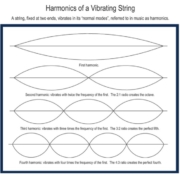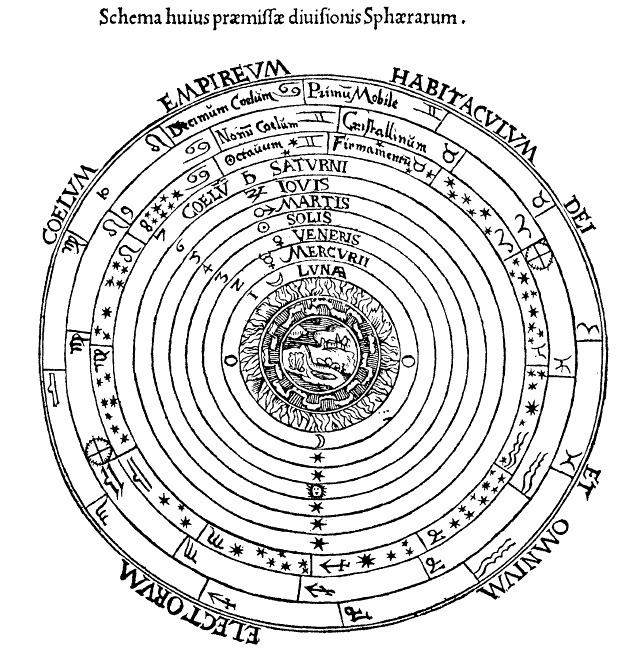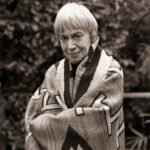Eternal Return (Homo Mysticus excerpt)
Outside of the teacher to student relationship we have going on here, or at least the intentions of such, we are also trying to move knowledge forward for the collective as well. Press the boundaries of acceptable, relatable and real knowledge to include what the ancients knew without even knowing they knew. To recover something so fundamental to being human, that it was lost and forgotten. To set down the intellectual foundations so that true healing can begin, and our place in the world can again be properly understood.
This is an academic concern just as much as it is a personal one, a theological one and is designed to be taken seriously by the academic community. The suggestion herein is that academia is itself lost, like the rest of us, and – like the rest of us – needs to take a breath, check yourself before you wreck yourself, and re-evaluate what the ancients were really telling us, what purpose religion was supposed to serve, and what the boundaries of scientific knowledge truly are. Go back and re-read your Aristotle basically.
As I mention elsewhere the original intent for this work, its psychic motivation you might say, has been my general disappointment in the state of knowledge about the divine, what you might call a learned theology, as it is presented to the general public. I am speaking here of many of the figures in the so-called Intellectual Dark Web and even on some of the more out there podcasts which deal in the paranormal, the weird, the philosophical or just off beat topics in general.
The academics most certainly who for all their knowledge mostly are incapable, by design perhaps, of rooting their teachings into a proper framework of knowledge through which their subjects should be viewed – because it does not exist within academia basically, through no fault of their own of course. And the poor priests have lost virtually all of their credibility, and the Catholic Church with it. The Tibetan monks have been almost systematically wiped out by the Chinese government as a threat to the stability of the state, eradicated like some bacterial infection. Even the yogis are now soiled with their mass marketing and high profile, celebrity guru culture they have created for themselves. Who is left to show people the way? Trump? Jesus Mary and Joseph something must be done here.
There are some good views that are put out there, in particular that Joe Rogan has brought to the fore in fact, and I am huge fan of Dr Jordan Peterson’s work, but there is a lot of crackpot stuff out there too and its become almost impossible to separate the wheat from the chaff as they say.
No one seems to have been able to put all the pieces together. Public Service Announcement: this is what I attempt to do here. But they are put together in such a way that one need not suspend one’s knowledge of Science, or reason, to reach this mythical place where the gods roam in chariots across the sky and fight demons at night in the underworld.
Things aren’t quite what they seem to be, everyone has caught on to this at least to some degree, and people are flailing around looking for belief systems, worldviews, tribes they call them now, where they can find some meaning and purpose for their lives. Totally get it. If you are an intellectually minded, academically bent, relatively skeptical mystic – this book is for you.
Therefore, we need to spend a moment on the placement of the work within the Academy, and if you will indulge me I will try and do that as briefly as I can, as well as define as best I can the terms mysticism, esotericism and Gnosticism, s I use them throughout this work, these terms being more so than any other the best descriptors of the project at hand, the most accurate ‘isms’ that we wish to file this project under. We want to add this to the Academy libraries, and we want it filed under mysticism, esotericism and Gnosticism basically, all in their post-modern variants as we define them here. In so doing we hope to recast homo sapiens in a new light in the postmodern world, enter homo mysticus.
Let’s start with the mystical – what we are dealing with here is the strange and fantastic, bit the true – as distinguished from fantasy or Science fiction. It has a religious connotation in that there are parts of religion which are, and have always been, mystical but the mystical need not be religious. It’s that which is ‘mysterious’ but its mystery comes from its connection to reality, to truth combined with its inexplicability, the inability to explain said phenomenon by purely rational or scientific means. Its truth is an indicator that something is wrong with the model but by itself is not powerful enough, intellectually at least, to extend the model by itself. It’s just mysterious enough that its given some sort of miscellaneous qualifier and is told to just wait on the side there for a while until we figure out what to do with you sort of thing.
Esotericism is a bit more straight forward, at least definitionally. It is to be understood properly as the opposite of exoteric, or that which is out in the open for everyone to see. The esoteric is the other part of the exoteric which remains hidden from general view. Historically the terms have been used to describe a sort of adjunct religious discipline, or set of disciplines, which have existed alongside the more widespread and orthodox teachings of religions in general – again the exoteric and esoteric co-existing side by side. This tradition goes as far back in Western philosophy as Plato, who is said to have his ‘unwritten doctrines’. The Egyptian priests were known for their secret teachings of course, widely known in antiquity and the ancient Greeks had their mystery cults, of Dionysus and Orpheus and others no doubt.
Gnosticism perhaps brings the mystical and the esoteric together, binds it in a way into its whole. The circle which extends over and above its constituent parts – the holistic from the reductionist. It is to know, and it is a knowing. It is the mystical tradition of the West in Neo-Platonic garb. It is through this gnosis that the Qur’an was revealed to Muhammad, to Abraham and to Moses. It is the metaphysical bridge between the Father and the Son. It is the knowing of that by which one becomes knowledge itself. It is the vidyā that the Rishis speak of in the Upanishads and it is the ultimate goal of the Jnana Yogi. In this knowing, one knows everything and nothing simultaneously. For in the fullness of complete knowledge, there is nothing left to be known. When you know this, you will have known what it is to taste the nectar of the Gnostic.
This work is about gnosis, but people must be able to distinguish lower and higher forms of knowledge in order for this allowance to occur. A ‘knowing’ is not the same thing as an ‘understanding’ or a ‘comprehension’. It is a field of knowledge and awareness itself which rests beyond this earthly plane of existence where mind and matter dominate the landscape so to speak.
One can tap into this reality, the Intellect of Plotinus, by means of the Soul (which operates in both directions it turns out) but one must allow for the existence of the Soul before this gnosis is even a possibility, otherwise the ‘experience’ and that is what it is, an ‘experience’ of knowledge, of ‘knowing’ will be rejected after it has occurred.
Unless there is a container that is suitable to hold the experience, its implications and subtle and yet powerful truth, it will not be properly absorbed and integrated. This book is an attempt, among other things, to create that container – and also to lead the reader along the path to this gnosis, if not to light the spark that kindles such gnosis in a reader or two perhaps if we are lucky.
One must open the door to the possibility that things are not what they seem to be – and if this is allowed we should be able to expand our minds some to ultimately lead a more full and happy life.
In addition to this mythical journey through the mystical and the esoteric, this journey to the realms of the gnostic as it were, let us try and address at least one line of potential criticism as it relates to this work’s position in academia – as an outsider of course, for it is only from an outsider that a work like this could be produced, as Jesus knew only too well for example.
The basic outline here is something like the following, repeated through a series of textual and esoteric traditions that more or less come together at the end of the work. [spoiler alert: it’s a happy ending.]:
- recover some lost, hidden meanings in some of the ancient ‘religious’ texts (Genesis, Sēpher Yəṣîrâh, Upanishads, Dàodé Jīng, etc.). Covers most of Eurasian philosophy in antiquity, as we define this field in Theology Reconsidered.
- identify basic similarities of meaning and symbology present in most, if not all this material. This gets into numerology and Geometry in particular, but this is coupled with original, postmodern, gnostic exegesis of the original texts themselves. Looking at the source language wherever possible.
- explore (further) some of the (potential) reasons for these similarities – to this end this work is a final bookend of sorts on Theology Reconsidered. We tie up some loose ends from that work, and finally connect the dots end to end from Pythagoras to Fu Xi.
- bring the reader along me on this journey so they can see through my eyes (so to speak). Breadcrumbs for the gnostic seer, as outlined above.
- facilitate mind and awareness expansion (in the persona) to accommodate a modified, expanded, belief system. Replacing the reductionist, materialist worldview with a more holistic and energy based view, complementing the old with the new you night say.
- Expansion of the notion of Science, and knowledge, in the Academy to support the growing mountain of evidence in Physics, Psychology, Cosmology, Biology and Chemistry that points to something altogether strange and mysterious which underpins, intellectually and biochemically supports these disciplines in way that is not explainable with a purely materialistic and objective realist epistemological position
- Complement the gnosis with classic renditions on how best to be, how best to tune this mystical instrument, our homo mysticus, using tried and true methods that have been around for millennia now.
If we accomplish just a few of these lofty objectives this project will have been worth it.
But we need not suspend reason to go on this journey, at least not entirely. A leap of faith is necessary, just a small opening that comes from a small voice inside your head that whispers, what if? And from this seed you might be surprised what will grow. At the very least you may learn something, even if it is that which you refuse to believe, that which you reject, such that you may move forward on this great journey one way or another. For we all ride this same wave together for the most part, whether we see this as true or not, it remains true nonetheless.
Ultimately, we are looking to recover some lost wisdom here, shed some light on that which has been hidden, the esoteric, and as such hopefully press the boundaries of our knowledge as common race of humanity move forward in some meaningful way, such that disaster may as of yet be avoided. And do this in a postmodern era where everything is subject to disbelief and the very act of interpretation is a reinforcement of ideologies based upon power and corruption.
And yet at the same time we must recognize that cognitive dissonance is a thing, as is confirmation bias – people have a tendency to see what they believe. But Science is limited in what it can tell us about life, and meaning, and we need meaning in our lives otherwise we are lost[1] so something must be done.
And if you suspend your disbelief for a moment, and take this journey with me, you may be surprised by what you find, and what you had lost but hadn’t even remembered that you lost it. The most precious thing of all. Yourselves.
[1] One of the major themes in Jordan Peterson’s work, especially as it can be seen in his exegesis of the Old Testament.









I’ve been trying to understand the notion of gnosis for a while, this is helpful.
The approach you outline about finding convergence in the different spiritual traditions bears some resemblance to Aldous Huxley’s Perennial Philosophy
Yes, with a bit of a more modern touch integrating latest research in physics and psychology. You would find the book interesting, the approach is characteristically (empirically) gnostic.
I would invite you to try Complex Society : In the Middle of the Middle World by Bojan Radej and Mojca Golobič.
Here the authors re-contextualise postmodernism and systems thinking by adding an anti-post modernist and antisystems perspective. Pgs 184 – 189 are particularly telling.
For me it begs the question of who among us dares to truly sail the voids.
You’re efforts here are, genuinely, appreciated and timely. I salute you for sharing your precious learning and the dedication to have done so.